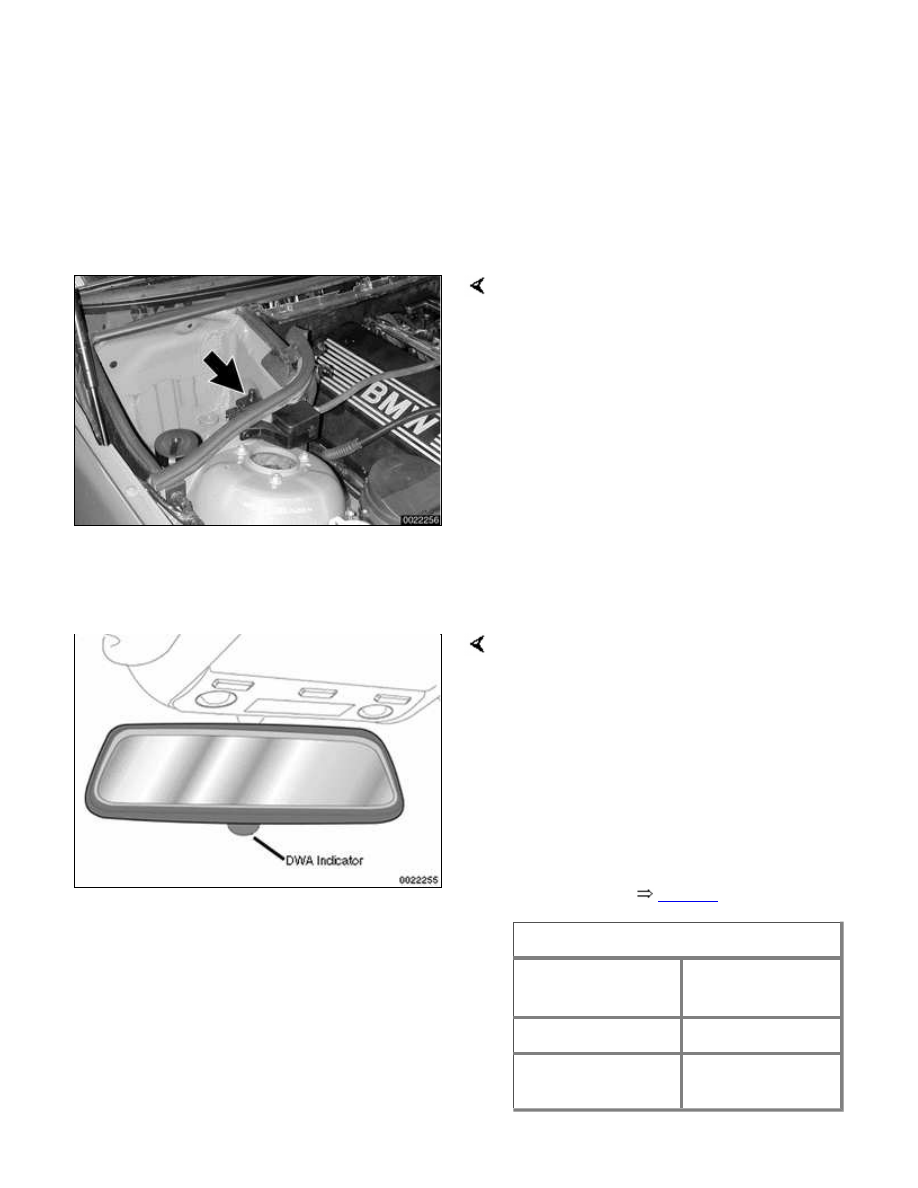BMW 3 (E46). Manual - part 224

the key, this switch provides a
ground signal to the GM V
preventing the DWA from activating
if armed.
Hood contact switch
Located on the right side engine
compartment, the hood contact switch
(arrow) provides a ground signal to the
GM V signifying an open hood. The
plunger of this switch can be pulled up
past a detent causing the switch contact
to open. This feature can be used to
simulate a CLOSED hood with the hood
open when diagnosing the DWA system.
DWA LED
The DWA indicator is located in the rear
view mirror. All E46 vehicles are
equipped with the LED. It is not part of
the retailer installed accessory DWA
system.
The LED is provided with constant
battery voltage (KL 30). The GM V
provides a switched ground signal
providing the various blinking signals
used to convey DWA status to the
vehicle operator. DWA LED status is
summarized in
Table a
.
Table a. DWA LED status
DWA status
DWA LED
condition
Disarmed
OFF
Armed
Continual slow
flash